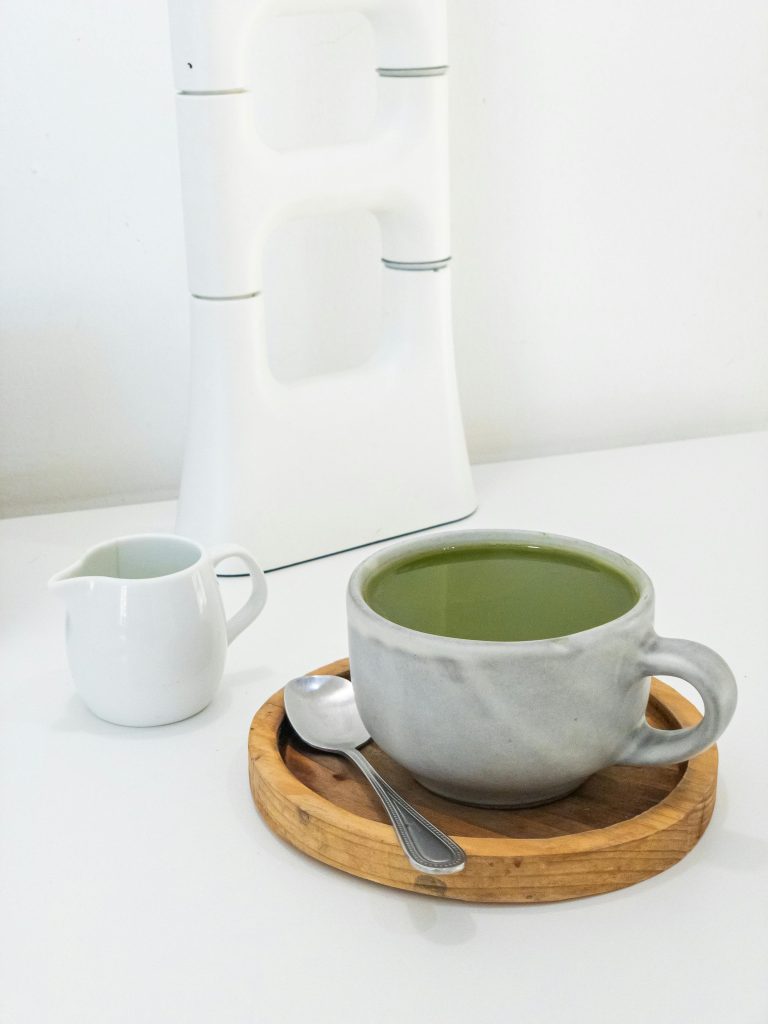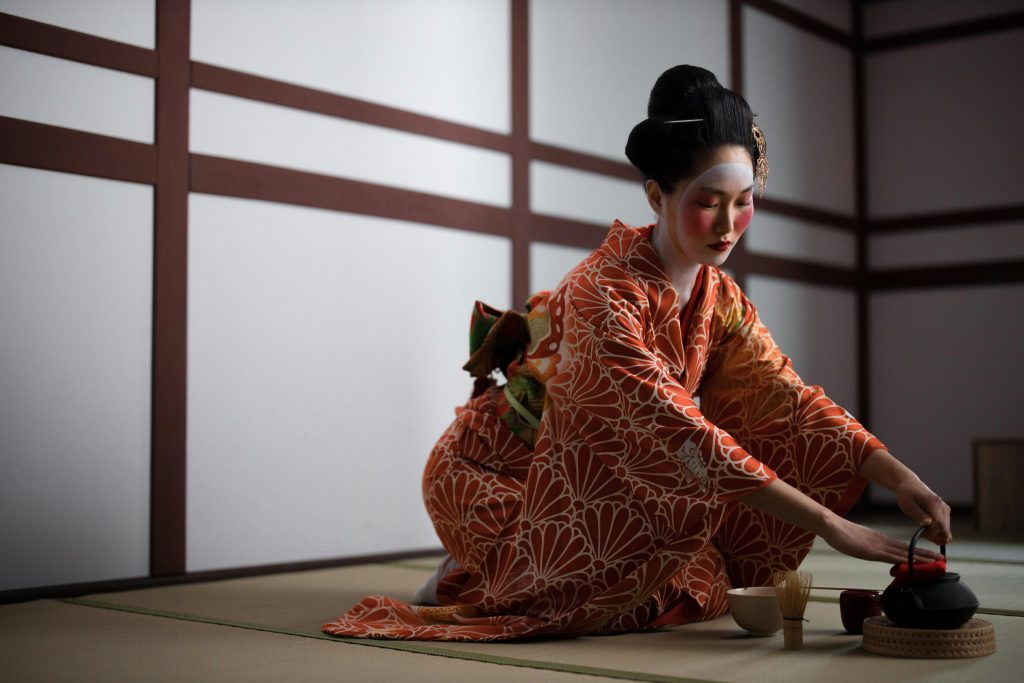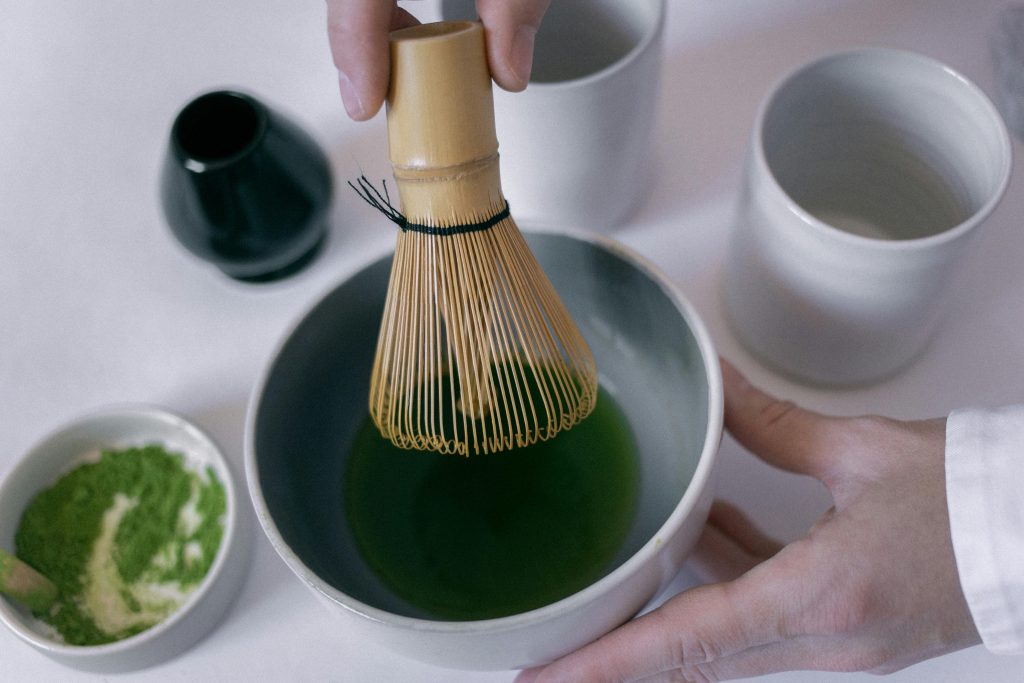What is Matcha Tea?
Matcha tea is a type of green tea that is finely ground into a powder, making it distinct from other teas that are steeped in water with leaves that are discarded after brewing. This vibrant green powder is made by grinding specially grown and processed green tea leaves, resulting in a nutrient-rich beverage with a unique flavor profile. Matcha is commonly used in traditional Japanese tea ceremonies and has gained popularity worldwide for its health benefits and versatile culinary applications.
With its bright green color and earthy taste, matcha is known for its rich antioxidants and amino acids, particularly the compound L-theanine which is believed to have calming effects on the mind and body. Unlike other types of green tea, matcha is shade-grown before harvest, a process that enhances its chlorophyll content and produces a smooth, umami flavor. The labor-intensive production and meticulous preparation contribute to matcha’s reputation as a premium tea that offers a concentrated dose of beneficial nutrients in each sip.

The History of Matcha
Matcha has a rich history that dates back to 8th century Japan when Buddhist monks introduced the practice of grinding green tea leaves into a fine powder. This finely ground tea became popular among the nobility and eventually evolved into the ceremonial tea known as matcha. Over the centuries, matcha has become deeply ingrained in Japanese culture, symbolizing purity, tranquility, and respect.
The cultivation and production of matcha have been refined and perfected through the ages, with each step carefully executed to ensure the highest quality tea. Traditionally, only the youngest and most tender leaves are selected for matcha, which are shaded from the sun before being hand-picked and steamed to preserve their vibrant green color and nutrients. The leaves are then carefully dried and stone-ground into a fine powder using traditional granite mills, ready to be whisked into a frothy, invigorating cup of matcha tea.
Different Types of Matcha
There are several different types of matcha available on the market, each offering its unique characteristics and flavor profiles. The most common types include ceremonial grade matcha, which is considered the highest quality and is typically used in traditional tea ceremonies. Culinary grade matcha is more affordable and suitable for cooking and baking, offering a slightly more bitter taste compared to ceremonial grade.
In addition to these two main types, there are also flavored matcha varieties that incorporate additional ingredients such as fruit powders or spices to add a twist to the traditional matcha flavor. Lastly, there are lower quality matcha options that are often sold in bulk or pre-packaged forms, offering a more subdued taste and lower health benefits compared to premium grades.
Health Benefits of Matcha
Matcha tea is not only a delightful and vibrant beverage but also boasts a range of health benefits that have made it increasingly popular in health and wellness circles. Packed with antioxidants, matcha is known to help protect the body from oxidative stress and reduce the risk of chronic diseases. These antioxidants, such as catechins, have been linked to supporting heart health, improving brain function, and even aiding in weight loss.
In addition to antioxidants, matcha contains a unique amino acid called L-theanine, which is known for its calming effects on the mind and body. This can help reduce stress and promote relaxation without causing drowsiness. Additionally, matcha is a good source of chlorophyll, which may help detoxify the body and promote overall well-being. With its impressive array of health benefits, incorporating matcha into your daily routine can be a simple yet effective way to support your health and vitality.
How to Choose High-Quality Matcha
When choosing high-quality matcha, it’s important to pay attention to the color, texture, and aroma of the powder. High-quality matcha is typically a vibrant shade of green, indicating that it was grown and processed with care. The texture should be fine and smooth, without any clumps or impurities. A fresh and grassy aroma is a good sign of quality, as it reflects the flavor profile of the matcha.
Additionally, the origin and grade of matcha can also impact its quality. Matcha from Japan, specifically from regions like Uji, Nishio, or Kirishima, is generally considered superior due to the favorable climate and growing conditions. When it comes to grade, ceremonial grade matcha is the highest quality and is ideal for drinking on its own. Culinary grade matcha, on the other hand, is better suited for baking or cooking. By considering these factors, you can ensure you’re selecting a high-quality matcha for an authentic and enjoyable tea experience.
The Traditional Japanese Tea Ceremony
The Traditional Japanese Tea Ceremony, also known as Chanoyu or Sado, is a cultural practice that involves the ceremonial preparation and consumption of matcha tea. This traditional ritual holds great significance in Japanese culture, emphasizing harmony, respect, purity, and tranquility.
During the tea ceremony, every movement and gesture is deliberate and symbolizes a deeper meaning. The host meticulously prepares the matcha tea by whisking the bright green powder with hot water in a precise, rhythmic manner. Guests partake in the tea with mindfulness, sipping it slowly to appreciate the flavor and aroma. The ceremony creates a moment of serenity and connection, fostering a sense of community and mindfulness among participants.

Tools and Equipment Needed for Brewing Matcha
To properly prepare and enjoy a delicious bowl of matcha tea, there are several essential tools and equipment needed for brewing matcha. The first and most important tool is a bamboo whisk, also known as a Chasen. This traditional utensil is used to froth the matcha powder with hot water, resulting in a smooth and creamy texture. Another indispensable item is a tea bowl, typically made from ceramic or porcelain, which is used to whisk and drink the matcha. The shape of the bowl is designed to make it easier to whisk the matcha and create a consistent froth.
Additionally, a bamboo scoop, called a Chashaku, is used to measure the right amount of matcha powder for each serving. This ensures that the flavor of the matcha is balanced and not overpowering. A sifter may also be helpful to remove any clumps in the matcha powder before whisking. Lastly, having a kettle to heat the water to the appropriate temperature is essential for brewing matcha. By having these tools and equipment on hand, you can elevate your matcha tea experience and enjoy the ritual of preparing and savoring this cherished traditional beverage.
Proper Storage of Matcha
After purchasing high-quality matcha, it is crucial to store it properly to maintain its freshness and flavor. Matcha is delicate and can easily lose its vibrancy if exposed to air, light, heat, or moisture. To ensure optimal storage, it is recommended to keep matcha in an airtight container, away from direct sunlight and humidity.
Additionally, storing matcha in a cool, dark place such as a pantry or kitchen cabinet will help preserve its taste and antioxidant properties. It is important to use up the matcha within a reasonable timeframe to fully enjoy its benefits and prevent it from losing its potency over time. By following these storage guidelines, you can prolong the shelf life of your matcha and continue to savor its unique flavor profile in every cup.
How to Prepare Matcha Tea at Home
To prepare matcha tea at home, start by sifting 1-2 teaspoons of high-quality matcha powder into a bowl to remove any lumps. Next, add a small amount of hot water, ideally around 175°F (80°C), and whisk vigorously in a zig-zag motion using a bamboo whisk until a frothy layer forms on top. It’s important to whisk the matcha thoroughly to achieve a smooth and creamy texture.
Once the matcha has been whisked to perfection, it is ready to be enjoyed. Pour the vibrant green tea into a cup and savor its rich umami flavor and earthy notes. Matcha can be enjoyed on its own or paired with a traditional Japanese sweet to balance its intense flavor profile. Experiment with different brewing methods and adjust the amount of matcha powder to find the perfect balance and intensity that suits your taste preferences.

Different Brewing Methods for Matcha
One popular method of brewing matcha is the traditional ceremonial approach, which involves the use of a bamboo whisk called a chasen. In this method, the matcha powder is sifted into a bowl, hot water is added, and then the mixture is whisked vigorously until a frothy layer forms on top. This technique is meant to create a smooth and velvety texture, ensuring that the full flavor of the matcha is properly showcased.
Another common brewing method is the modern approach, which involves using a shaker or blender to mix the matcha powder with water. This method is quick and convenient, making it a popular choice for busy individuals who still want to enjoy the health benefits and unique taste of matcha. While this method may not result in the same frothy consistency as the traditional method, it is still an effective way to create a delicious and refreshing cup of matcha tea.
The Importance of Water Temperature
When preparing matcha tea, the water temperature plays a crucial role in achieving the perfect brew. Water that is too hot can result in a bitter taste, while water that is too cold may not allow the matcha to fully dissolve. The recommended water temperature for matcha is around 175°F to 180°F (80°C to 82°C). This temperature range ensures that the matcha powder can fully incorporate into the water without compromising its delicate flavors.
Maintaining the right water temperature is essential for bringing out the complex flavors and vibrant green color of matcha. By using a thermometer or an electric kettle with temperature control, you can easily monitor and adjust the water temperature to ensure a harmonious balance of flavors in your matcha tea. Experimenting with different water temperatures can also help you tailor the taste of your matcha to suit your preferences, whether you enjoy a more robust or milder flavor profile.
Measuring the Right Amount of Matcha
To achieve the perfect cup of matcha tea, it is crucial to measure the right amount of matcha powder accurately. The general rule of thumb is to use about 1 to 1.5 teaspoons of matcha powder for every 8 ounces of water. However, preferences may vary depending on personal taste, so feel free to adjust the amount of matcha according to your liking. It’s important to avoid using too little matcha, as it may result in a weak and underwhelming flavor, while using too much may overpower the delicate taste of the tea.
Ensuring that you measure your matcha powder carefully will help maintain the balance of flavors and textures in your matcha tea. A good practice is to sift the matcha powder before measuring to break up any clumps and ensure a smooth consistency. This step not only helps in accurate measuring but also contributes to a smoother and more enjoyable drinking experience. By taking the time to measure the right amount of matcha, you can elevate the overall quality of your matcha tea and fully appreciate its unique flavor profile.
Whisking Techniques for a Frothy Finish
To achieve that coveted frothy finish when preparing matcha tea, mastering the art of whisking is essential. The traditional bamboo whisk, also known as a “chasen,” is the tool of choice for creating a smooth and frothy matcha beverage. When whisking, hold the chasen upright and use a quick back-and-forth motion with your wrist rather than stirring in circles. This technique helps incorporate air into the matcha, resulting in a light and frothy consistency.
In addition to the whisking motion, the angle at which you hold the chasen can impact the frothiness of your matcha. Tilting the whisk slightly to the side while whisking can help create more foam on the surface of the tea. Experiment with different angles and whisking speeds to find the technique that works best for you and produces the frothy finish that enhances the overall matcha drinking experience.
• Hold the chasen upright and use a quick back-and-forth motion with your wrist
• Avoid stirring in circles to incorporate air into the matcha
• Experiment with different angles while whisking to create more foam on the surface of the tea
• Find the technique that works best for you to achieve a frothy finish
Adding Sweeteners or Milk to Matcha
When it comes to enhancing the flavor of matcha, some people choose to add sweeteners or milk to their tea. Sweeteners such as honey, sugar, or maple syrup can help balance out the slightly bitter taste of matcha, especially for those who are sensitive to bitterness. Adding a touch of sweetness can also make matcha more appealing to those who are new to this vibrant green tea.
On the other hand, adding milk to matcha can create a creamy and rich texture that transforms the tea into a comforting and indulgent drink. The most common choice is cow’s milk, but alternative milk options such as almond, soy, or oat milk can also be used for a dairy-free version of matcha latte. The addition of milk can mellow out the intense flavor of matcha, resulting in a soothing and satisfying beverage that can be enjoyed hot or cold.
Pairing Matcha with Food
When it comes to pairing matcha with food, the versatile flavor profile of this vibrant green tea powder offers a wide range of options. Its earthy and slightly bitter notes can complement both sweet and savory dishes. For a harmonious pairing, try enjoying a bowl of matcha alongside citrusy desserts like lemon pound cake or orange-flavored cookies. The bright acidity of the citrus cuts through the richness of the matcha, creating a balanced and delightful combination.
Savory dishes can also be enhanced with the addition of matcha. Consider incorporating matcha powder into savory baked goods like bread or crackers for a unique twist. Its grassy undertones can add depth to dishes featuring seafood, such as shrimp stir-fry or sushi rolls. Experimenting with different flavor combinations will help you discover how matcha can elevate a wide array of culinary creations.
How to Clean Matcha Tools and Equipment
To maintain the quality of your matcha tools and equipment, it is essential to clean them regularly. After each use, rinse your bamboo whisk, also known as a chasen, under warm water. Gently shake off any excess water and let it air dry on a whisk holder or stand.
For the matcha bowl, or chawan, simply rinse it with warm water and wipe it dry with a clean cloth. Avoid using soap or detergent, as it can leave residues that affect the taste of your matcha. Additionally, make sure to wipe down your bamboo scoop, or chashaku, after each use to prevent any residual matcha from hardening and affecting future brews. By maintaining a clean set of matcha tools and equipment, you can continue to enjoy the authentic flavors of this beloved Japanese tea.
Common Mistakes When Brewing Matcha
One common mistake when brewing matcha is using water that is too hot. Matcha is a delicate tea that can easily become bitter if the water temperature exceeds 175°F. It’s important to allow the water to cool for a few minutes after boiling to ensure that the matcha retains its smooth and savory flavor.
Another mistake to avoid is not sifting the matcha powder before whisking. Sifting the matcha helps break up any clumps and ensures a smoother and more consistent texture when mixed with water. Skipping this step can result in a lumpy and unevenly mixed tea, affecting the overall taste and presentation of the matcha.
Alternative Uses for Matcha Powder
Matcha powder, known for its vibrant green color and earthy flavor, is not just limited to being a beverage. Its versatility extends to various culinary creations and beauty rituals. In the realm of cooking, matcha can be a delightful addition to baked goods such as cookies, cakes, and muffins, imparting a unique taste and a pop of color. Its finely ground form allows it to blend seamlessly into doughs and batters, infusing them with a subtle essence of green tea.
Beyond the kitchen, matcha powder can also be utilized in homemade skincare remedies. With its antioxidant properties, matcha can be incorporated into face masks and scrubs, offering benefits such as reducing inflammation and promoting youthful skin. Mixing matcha with ingredients like honey, yogurt, or coconut oil can create luxurious DIY treatments that nourish and revitalize the skin, leaving a refreshing scent and a revitalized complexion.
Sourcing Sustainable and Ethical Matcha
When seeking out matcha tea, it is essential to prioritize sustainability and ethical sourcing. This means looking for brands that value environmental responsibility and fair trade practices. Sustainable matcha is typically grown without the use of harmful pesticides or chemicals, ensuring a more natural and pure product. Additionally, ethically sourced matcha supports the well-being of the farmers and workers involved in its production, guaranteeing fair wages and working conditions.
By choosing sustainably and ethically sourced matcha, consumers can not only enjoy a high-quality product but also contribute to positive social and environmental impacts. Supporting brands that prioritize sustainability helps to protect the planet and promote ethical practices within the tea industry. By making informed choices when purchasing matcha, individuals can play a role in fostering a more sustainable and ethical supply chain for this beloved green tea.
Exploring Different Flavors of Matcha
Matcha tea comes in a variety of flavors, each offering a unique taste experience to tea enthusiasts. From the widely popular traditional ceremonial grade matcha with its rich umami flavor to the subtly sweet and delicate culinary grade matcha, there is a matcha flavor to suit every palate. Moreover, flavored matcha blends such as matcha infused with fruity or floral notes provide a refreshing twist for those seeking a more innovative and dynamic tea-drinking experience.
Exploring the world of flavored matcha opens up a realm of possibilities for creating delightful and personalized tea beverages. Matcha latte enthusiasts may enjoy experimenting with vanilla or caramel-flavored matcha for a sweet and indulgent treat, while those looking for a refreshing boost could opt for matcha blended with citrus or mint flavors. Whether enjoyed hot or cold, flavored matcha offers a versatile way to elevate your tea-drinking rituals and savor the diverse nuances of this beloved Japanese tea.

